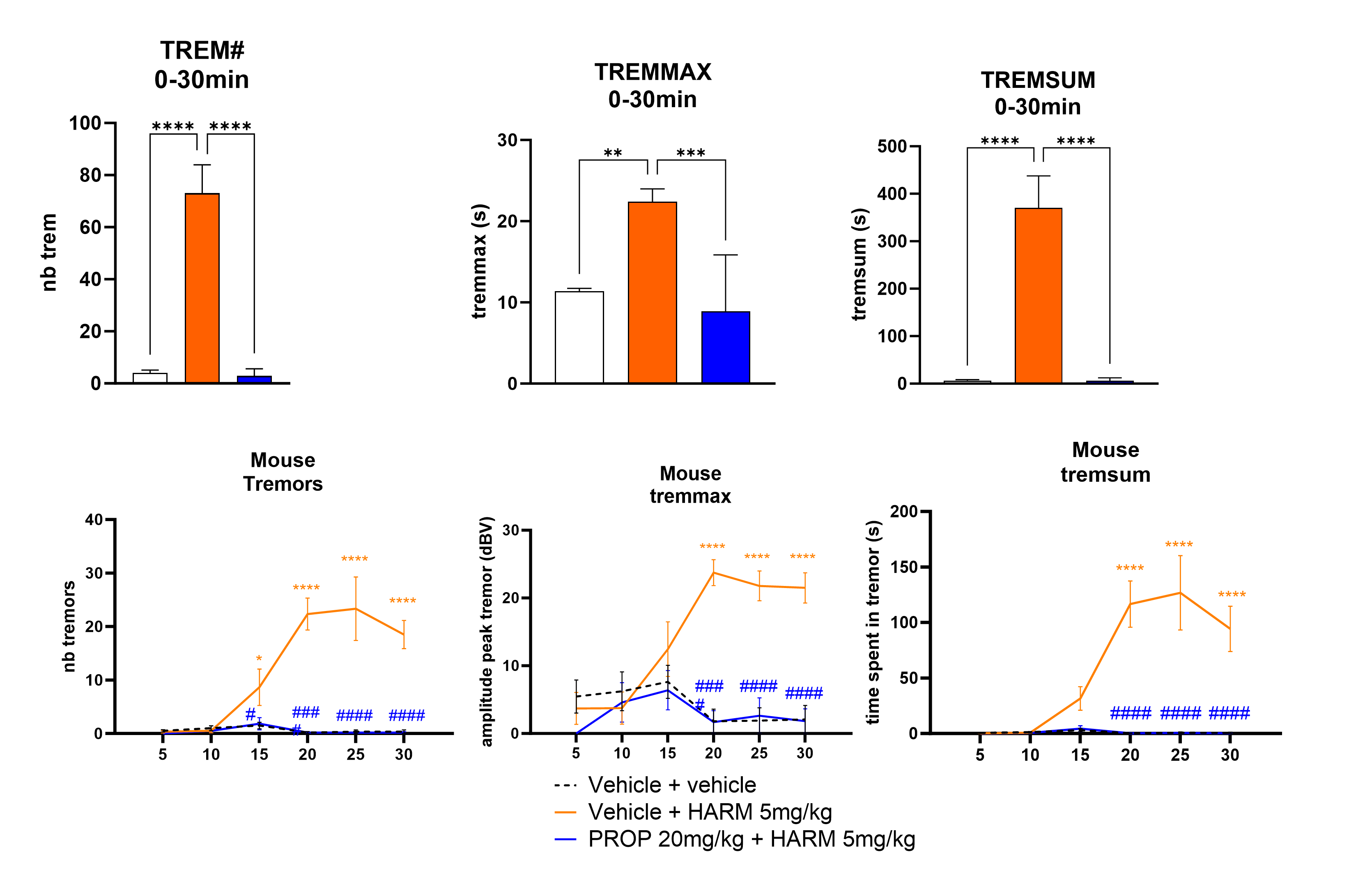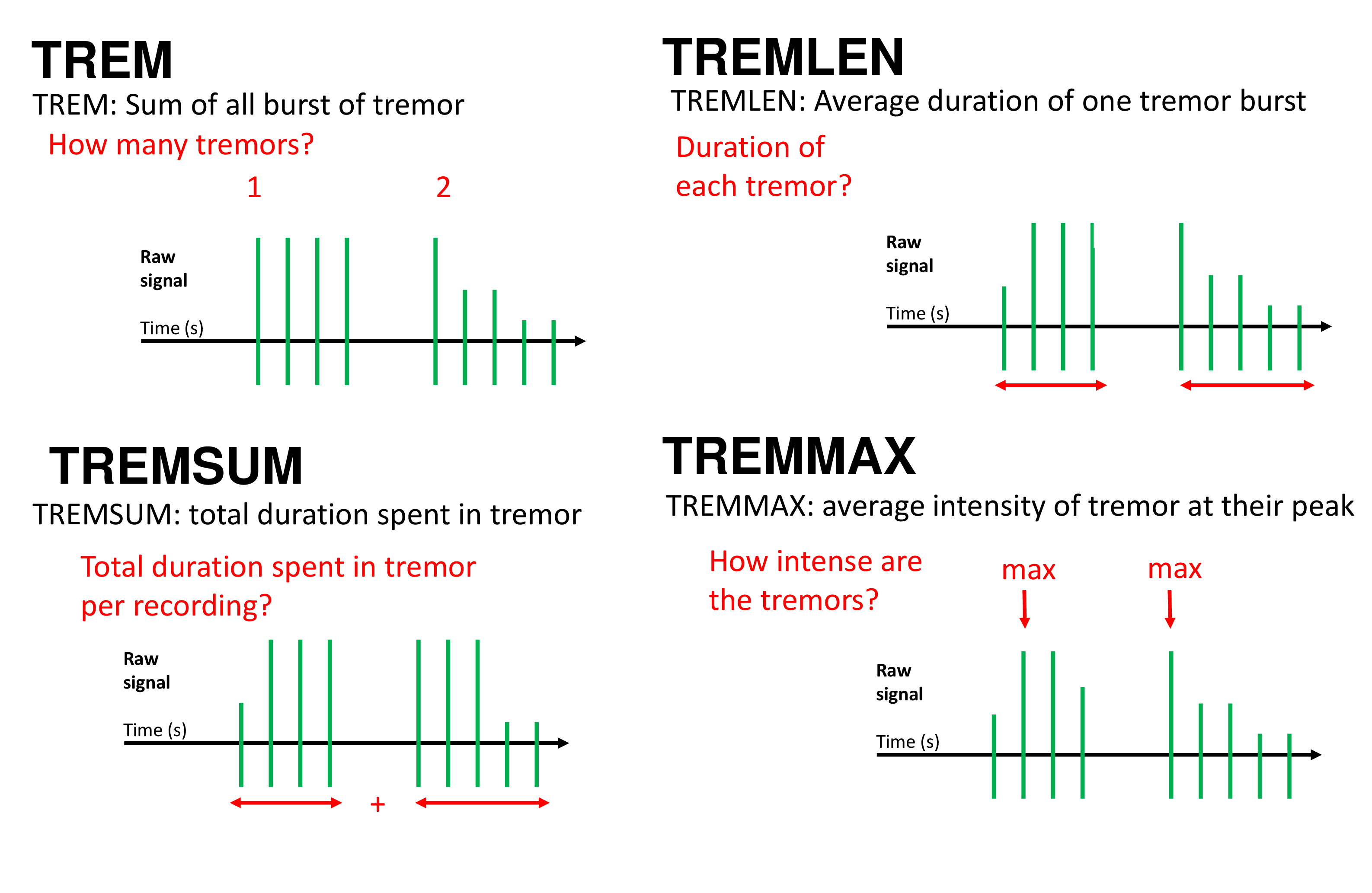Essential Tremor
Essential tremor (ET) is a progressive chronic neurological disorder characterized by involuntary and rhythmic tremor of a body part (hands, arms, head, vocal cords, etc). Contrary to Parkinson’s disease where tremors are more prominent while at rest, ET is more visible and intense when a patient is in motion or trying to maintain a fixed position. While ET is not life-threatening, patient quality of life and the ability to execute simple tasks such as drinking from a glass, can be severely affected as the condition progresses and worsens with age. As first-line medication for ET induces side effects in most patients1 it is essential to develop better treatments.
Examples of models and services we offer:
-
Harmaline administration can be used as a model of ET to induce 9-12Hz tremors in rats and 10-15Hz tremors in mice 2. Similar to what is seen in patients, the observed harmaline-induced tremors are more intense when the animal is in motion and appear to come in bursts. Numerous works have validated the harmaline-induced model as a preclinical model of essential tremor with distinct features from Parkinson’s disease 1,5,6, making it a reliable method to screen novel candidate drugs for ET.
Please contact us if you would like to discuss the possibility of co-developing new tremorgenic models. We are eager to expand our capabilities and help you achieve your scientific goals.
-
A piezoelectric plate can be used to record tremor events in rats or mice (SR-LAB from San Diego Instruments). Various quantifiable data can be retrieved from a single recording (power spectrum, intensity, duration, time spent in tremor) to assess whether NCEs affect the number of tremors, the duration of tremors, and/or the intensity of tremors 2-6.

-
Transpharmation offers you the option to use our proprietary algorithms to analyze your pre-recorded tremor-monitor data. You can tailor the data analysis and reporting to your needs and budget, and benefit from fast, reproducible, and validated processing of your data with full confidentiality.

- Thanvi B, Lo N, Robinson T. Essential tremor-the most common movement disorder in older people. Age Ageing. 2006 Jul;35(4):344-9
- Martin FC, Thu Le A, Handforth A. Harmaline-induced tremor as a potential preclinical screening method for essential tremor medications. Mov Disord. 2005 Mar;20(3):298-305
- Pan MK, Ni CL, Wu YC, Li YS, Kuo SH. Animal Models of Tremor: Relevance to Human Tremor Disorders. Tremor Other Hyperkinet Mov (NY). 2018 Oct 9;8:587
- Ossowska K, Głowacka U, Kosmowska B, Wardas J. Apomorphine enhances harmaline-induced tremor in rats. Pharmacol Rep. 2015 Jun;67(3):435-41
- Paterson NE, Malekiani SA, Foreman MM, Olivier B, Hanania T. Pharmacological characterization of harmaline-induced tremor activity in mice. Eur J Pharmacol. 2009 Aug 15;616(1-3):73-80
- Kosmowska B, Wardas J, Głowacka U, Ananthan S, Ossowska K. Pramipexole at a Low Dose Induces Beneficial Effect in the Harmaline-induced Model of Essential Tremor in Rats. CNS Neurosci Ther. 2016 Jan;22(1):53-62.